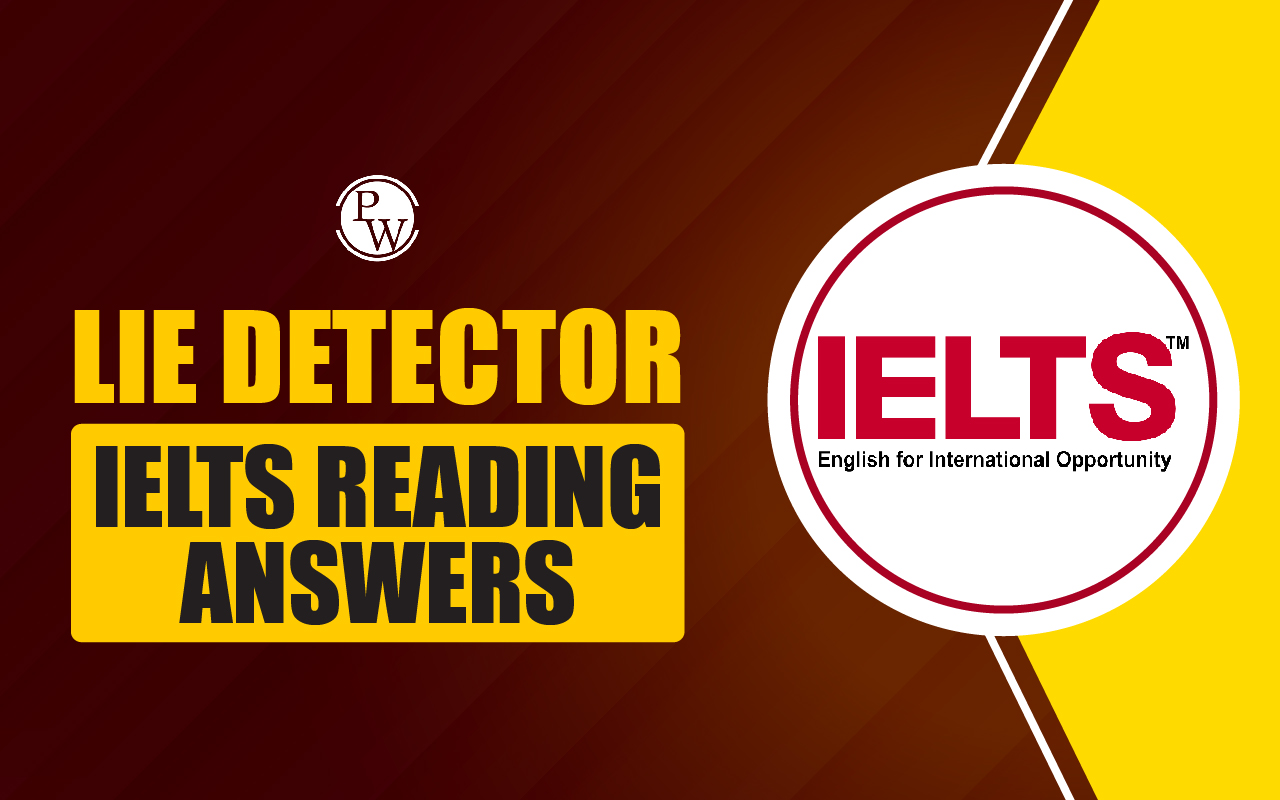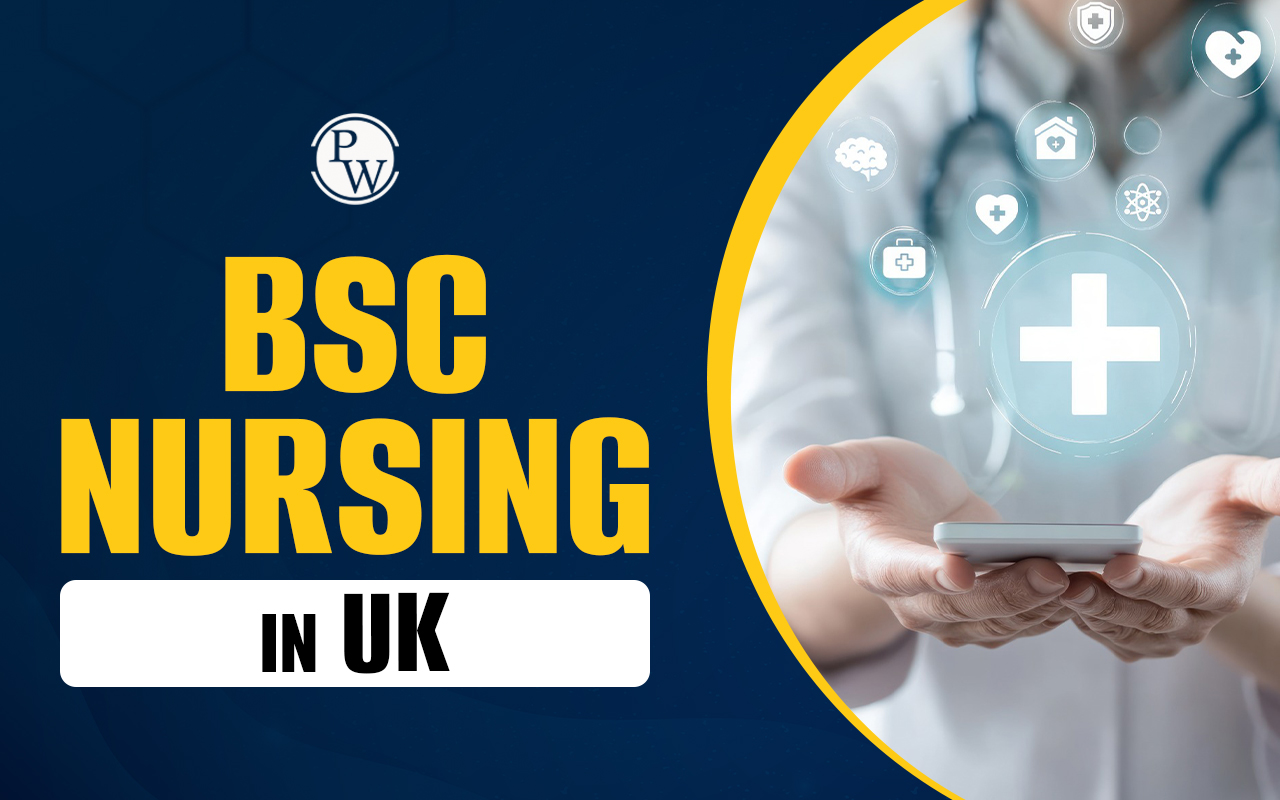

Lie Detector IELTS Reading Answers: Where IELTS is considerably one of the most difficult English Language Proficiency tests all around the world, its reading section is generally easy for IELTS aspirants as it analyses the basic understanding and summarizing skills of the candidates. The IELTS Reading Test includes several topics for passage comprehension. The “Lie Detector IELTS Reading Answers” is a very commonly asked topic for passage comprehension.
Here, we have included a sample passage for the “Lie Detector IELTS Reading Answers” topic along with their model answers from the passage. Students should know that they need to spend only 20 minutes on one passage to complete the full IELTS test . The overall question types are categorized into three sections. Read the article till the end to get more insights about the “Lie Detector IELTS Reading Answers” passage.Free IELTS Reading Practice Tests
Lie Detector IELTS Reading Answers Passage
Lie Detector IELTS Reading Answer
Paragraph A: However much we may abhor it, deception comes naturally to all living things. Birds do it by feigning injury to lead hungry predators away from nesting young. Spider crabs do it by disguise: adorning themselves with strips of kelp and other debris, they pretend to be something they are not – and so escape their enemies. Nature amply rewards successful deceivers by allowing them to survive long enough to mate and reproduce. So it may come as no surprise to learn that human beings- who, according to psychologist Gerald Johnson of the University of South California, or lied to about 200 times a day, roughly one untruth every 5 minutes- often deceive for exactly the same reasons: to save their own skins or to get something they can’t get by other means. Paragraph B: But knowing how to catch deceit can be just as important a survival skill as knowing how to tell a lie and get away with it. A person able to spot falsehood quickly is unlikely to be swindled by an unscrupulous business associate or hoodwinked by a devious spouse. Luckily, nature provides more than enough clues to trap dissemblers in their own tangled webs- if you know where to look. By closely observing facial expressions, body language and tone of voice, practically anyone can recognise the tell-tale signs of lying. Researchers are even programming computers – like those used on Lie Detector -to get at the truth by analysing the same physical cues available to the naked eye and ear. “With the proper training, many people can learn to reliably detect lies,” says Paul Ekman, professor of psychology at the University of California, San Francisco, who has spent the past 15 years studying the secret art of deception. Paragraph C: In order to know what kind of Lies work best, successful liars need to accurately assess other people’s emotional states. Ackman’s research shows that this same emotional intelligence is essential for good lie detectors, too. The emotional state to watch out for is stress, the conflict most liars feel between the truth and what they actually say and do. Paragraph D: Even high-tech lie detectors don’t detect lies as such; they merely detect the physical cues of emotions, which may or may not correspond to what the person being tested is saying. Polygraphs, for instance, measure respiration, heart rate and skin conductivity, which tend to increase when people are nervous – as they usually are when lying. Nervous people typically perspire, and the salts contained in perspiration conducts electricity. That’s why a sudden leap in skin conductivity indicates nervousness -about getting caught, perhaps -which makes, in turn, suggest that someone is being economical with the truth. On the other hand, it might also mean that the lights in the television. Studios are too hot- which is one reason polygraph tests are inadmissible in court. “Good lie detectors don’t rely on a single thing,” says Ekma ,but interpret clusters of verbal and non-verbal clues that suggest someone might be lying.” Paragraph E: The clues are written all over the face. Because the musculature of the face is directly connected to the areas of the brain that process emotion, the countenance can be a window to the soul. Neurological studies even suggest that genuine emotions travel different pathways through the brain than insincere ones. If a patient paralysed by a stroke on one side of the face, for example, is asked to smile deliberately, only the mobile side of the mouth is raised. But tell that same person a funny joke, and the patient breaks into a full and spontaneous smile. Very few people -most notably, actors and politicians- are able to consciously control all of their facial expressions. Lies can often be caught when the liar's true feelings briefly leak through the mask of deception. We don’t think before we feel, Ekman says. “Expressions tend to show up on the face before we’re even conscious of experiencing an emotion.” Paragraph F: One of the most difficult facial expressions to fake- or conceal, if it’s genuinely felt - is sadness. When someone is truly sad, the forehead wrinkles with grief and theinner corners of the eyebrows are pulled up. Fewer than 15% of the people Ekman tested were able to produce this eyebrow movement voluntarily. By contrast, the lowering of the eyebrows associated with an angry scowl can be replicated at will by almost everybody. “ If someone claims they are sad and the inner corners of their eyebrows don’t go up, Ekmam says, the sadness is probably false.” Paragraph G : The smile, on the other hand, is one of the easiest facial expressions to counterfeit. It takes just two muscles -the zygomaticus major muscles that extend from the cheekbones to the corners of the lips- to produce a grin. But there’s a catch. A genuine smile affects not only the corners of the lips but also the orbicularis oculi, the muscle around the eye that produces the distinctive “crow’s feet” associated with people who laugh a lot. A counterfeit grin can be unmasked if the corners of the lips go up, the eyes crinkle, but the inner corners of the eyebrows are not lowered, a movement controlled by the orbicularis oculi that is difficult to fake. The absence of lowered eyebrows is one reason why the smile looks so strained and stiff.Also Read:
Lie Detector IELTS Reading Answers Sample Questions
Lie Detector IELTS Reading Answers: Questions 1-5 Do the following statements agree with the information given in the passage? Write:
- TRUE if the statement agrees with the information
- FALSE if the statement contradicts the information
- NOT GIVEN if there is no information on this
Lie Detector IELTS Reading Answer: Questions 6-9 Choose the correct letter, A, B, C, or D. Write the correct letter in boxes 6-9 on your answer sheet.6. What is a benefit of being able to detect lies?
- It ensures financial success.
- It helps identify emotional intelligence.
- It prevents being deceived by others.
- It builds stronger relationships.
- It relies entirely on facial expressions.
- It involves clusters of verbal and non-verbal clues.
- Polygraph tests are the most reliable method.
- It requires a high level of emotional intelligence.
- To monitor the body’s response to nervousness.
- To identify truthful statements.
- To measure emotional intelligence.
- To regulate room temperature.
- To highlight professions prone to dishonesty.
- To show those skilled at controlling facial expressions.
- To demonstrate the importance of lie detection.
- To suggest they are good at detecting lies.
Lie Detector IELTS Reading Answer: Questions 10-13 Classify the following facial traits as referring to:10.Wrinkling of the forehead with grief. 11. Zygomaticus major muscles raising the corners of the lips. 12. The inner corners of the eyebrows lowering. 13. Absence of crinkling around the eyes with a smile.
- A. Happiness
- B. Anger
- C. Sadness
Write the correct letter, A, B, C, or D in boxes 10-13 on your answer sheet.
- D. None of these
| Section wise IELTS Band Score Links | |
|---|---|
| IELTS Reading Band Score | IELTS Listening Band Score |
| IELTS Speaking Band Score | IELTS Writing Band Score |
Lie Detector IELTS Reading Answer with Explanation
- Deception is uncommon among living organisms. Answer: FALSE Explanation: In the first paragraph of the passage it is given that deception is common in living organisms including birds, spider crabs, and humans.
- Lie detectors can directly detect if a person is lying. Answer: FALSE Explanation: In paragraph D, it is mentioned that high-tech lie detectors detect physical cues like nervousness to detect lies. They do not detect lies directly.
- Stress is a key indicator used to identify lies. Answer: TRUE Explanation: In paragraph C, it is mentioned that stress is considered a primary emotional state used to detect lies. We can conclude the same from the statement “The emotional state to watch out for is stress, the conflict most liars feel between the truth and what they actually say and do.”
- Polygraph tests are widely accepted as evidence in courts. Answer: FALSE Explanation: In paragraph D, it is mentioned that polygraph tests are not accepted in court as prime evidence because they are not reliable enough for legal standards.
- Genuine emotions can often bypass conscious control. Answer: TRUE Explanation: Paragraph E states, “Neurological studies even suggest that genuine emotions travel different pathways through the brain than insincere ones.”
- What is a benefit of being able to detect lies? Answer: C. It prevents being deceived by others. Explanation: Lie detection can help people to be swindled by an unscrupulous business associate or hoodwinked by a devious spouse.
- What does Ekman suggest about lie detection? Answer: B. It involves clusters of verbal and non-verbal clues. Explanation: According to Ekman, “Expressions tend to show up on the face before we’re even conscious of experiencing an emotion.” Which indicated that lies involve various verbal and non-verbal clues.
- Why do polygraph tests measure skin conductivity? Answer: A. To monitor the body’s response to nervousness. Explanation: As per the statement given in paragraph D, “Polygraphs, for instance, measure respiration, heart rate and skin conductivity, which tend to increase when people are nervous – as they usually are when lying.” polygraphs measure skin conductivity as a sign of nervousness to measure lies.
- Why are actors and politicians mentioned in the passage? Answer: B. To show those skilled at controlling facial expressions. Explanation: Actors and politicians are mentioned in the passage as they are among the few people who consciously control their facial expressions to hide lies effectively.
- Wrinkling of the forehead with grief. Answer: C. Sadness Explanation: Paragraph F states, “When someone is truly sad, the forehead wrinkles with grief and theinner corners of the eyebrows are pulled up.”
- Zygomaticus major muscles raising the corners of the lips. Answer: A. Happiness Explanation: In paragraph G, it is mentioned that a smile involves the zygomaticus major muscles raising the corners of the lips, which is associated with happiness.
- The inner corners of the eyebrows lowering. Answer: B. Anger Explanation: Paragraph F states “The lowering of the eyebrows associated with an angry scowl can be replicated at will by almost everybody.”
- Absence of crinkling around the eyes with a smile. Answer: D. None of these Explanation: There is no such evidence given in the passage. In the passage, paragraph G mentions that a genuine smile involves the orbicularis oculi muscles crinkling the eyes.
Guidance to PW
The IELTS Online Courses is a great initiative taken by Physics Wallah to help IELTS aspirants better prepare for the exam. Follow our below pages to learn more about the IELTS exam.| What is IELTS Exam? | Documents Required for IELTS Registration |
| IELTS exam eligibility requirements | IELTS Exam Fees |
| IELTS test results | IELTS Exam Pattern |
Lie Detector IELTS Reading Answer FAQs
Q. What do lie detectors measure?
Ans. Lie detectors measure physical cues such as respiration, heart rate, and skin conductivity to detect nervousness suggesting suspicious emotions, however, they do not detect lies directly.
Q. Why is stress important in lie detection?
Ans. Stress detection helps to identify deception as stress generally arises from the conflict between lies and truth.
Q. Can facial expressions reveal lies?
Ans. Yes, facial expressions can reveal lies. Genuine emotions show some natural non-verbal expressions on the face like crinkling around the eyes during real smiles.
Q. Why are polygraph tests inadmissible in court?
Ans. Polygraph tests only measure nervousness, not real lies. Therefore, they are inadmissible in court as emotions can be influenced by stress from the environment.
🔥 Trending Blogs
Talk to a counsellorHave doubts? Our support team will be happy to assist you!

Check out these Related Articles
Free Learning Resources
PW Books
Notes (Class 10-12)
PW Study Materials
Notes (Class 6-9)
Ncert Solutions
Govt Exams
Class 6th to 12th Online Courses
Govt Job Exams Courses
UPSC Coaching
Defence Exam Coaching
Gate Exam Coaching
Other Exams
Know about Physics Wallah
Physics Wallah is an Indian edtech platform that provides accessible & comprehensive learning experiences to students from Class 6th to postgraduate level. We also provide extensive NCERT solutions, sample paper, NEET, JEE Mains, BITSAT previous year papers & more such resources to students. Physics Wallah also caters to over 3.5 million registered students and over 78 lakh+ Youtube subscribers with 4.8 rating on its app.
We Stand Out because
We provide students with intensive courses with India’s qualified & experienced faculties & mentors. PW strives to make the learning experience comprehensive and accessible for students of all sections of society. We believe in empowering every single student who couldn't dream of a good career in engineering and medical field earlier.
Our Key Focus Areas
Physics Wallah's main focus is to make the learning experience as economical as possible for all students. With our affordable courses like Lakshya, Udaan and Arjuna and many others, we have been able to provide a platform for lakhs of aspirants. From providing Chemistry, Maths, Physics formula to giving e-books of eminent authors like RD Sharma, RS Aggarwal and Lakhmir Singh, PW focuses on every single student's need for preparation.
What Makes Us Different
Physics Wallah strives to develop a comprehensive pedagogical structure for students, where they get a state-of-the-art learning experience with study material and resources. Apart from catering students preparing for JEE Mains and NEET, PW also provides study material for each state board like Uttar Pradesh, Bihar, and others
Copyright © 2025 Physicswallah Limited All rights reserved.











